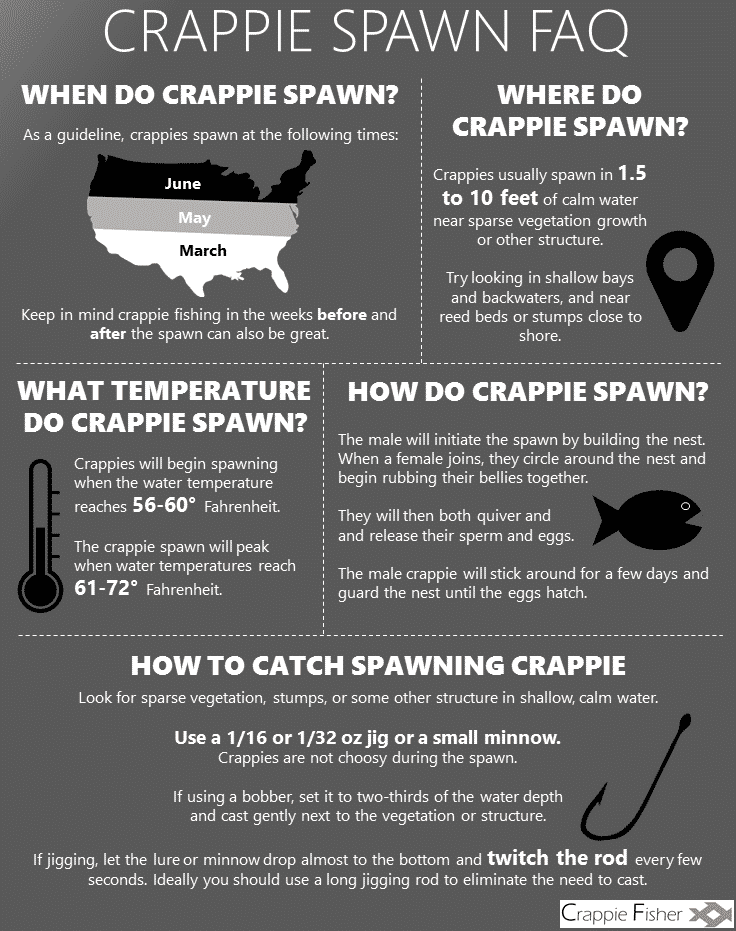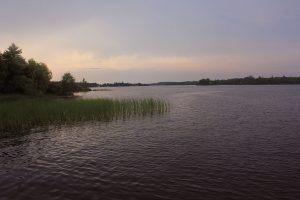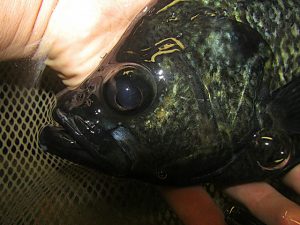Every crappie fisherman loves the crappie spawn. For most, it is the best opportunity to catch your limit. Once you hit a nesting location it can be non-stop action until you head home. If you want to be successful, though, here’s what you need to know:

When Do Crappie Spawn and the Best Crappie Fishing Times
Crappies spawn in the spring, most of the time. There are cases where crappies will spawn out of season if the conditions are right, but those are the exception to the rule. The exact time crappies will spawn during the spring varies depending on water temperature, and therefore latitude. Here are the general guidelines on when crappie will spawn in different parts of the U.S.:
| Jan | Feb | Mar | Apr | May | Jun | Jul | |
|---|---|---|---|---|---|---|---|
| Northern U.S. (north of Chicago) | Pre-spawn | Spawn | Post-spawn | ||||
| Central U.S. (in between) | Pre-spawn | Spawn | Post-spawn | ||||
| Southern U.S. (south of Oklahoma City) | Pre-spawn | Spawn | Post-spawn |
How Often Do Crappie Spawn?
Crappie, like most fish, spawn once per year. However, a female may spawn with multiple males over several weeks during a spawning season.
How Long Do Crappie Spawn?

A single crappie’s spawning period could last anywhere from a few days to a few weeks but under optimum temperatures it will last around a week.
Here’s a breakdown of what happens when a single pair of crappies spawn:
- The male initiates by building a nest – 2 to 3 days
- The female and male crappies spawn – 1 day
- The male guards the eggs until they hatch – 1 to 3 days
- The male sticks around to guard the fry (baby fish) – 1 to 7 days
Because crappie often spawn in colonies with as many as 35 nests, the total duration for a particular spawn area will probably be longer. This is due to different crappies beginning the spawn at different times. For this reason, the total duration of the crappie spawn will be anywhere from a few weeks to a couple months. Note that the larger the body of the water, the longer the crappie spawn will probably be.
How Do Crappie Spawn?
First, a male crappie will search out a good spot for his nest. Then the crappie will use his fins to shape a dish-like nest.
When a female becomes interested, the pair will begin by first swimming around the nest. They will then come to rest and push their bellies against each other. Both fish will quiver, the male will release his sperm (aka milt) and the female will release her eggs.
During a spawn, the female will release tens of thousands or even hundreds of thousands of eggs. Although the quality isn’t the greatest, here’s a video of two crappie actually spawning:
You can see the quivering motion of the one on the right at about 37 seconds.
Where Do Crappie Spawn?

The crappie spawn usually occurs in shallow, calm water near some sort of protection. This often means near the shore, at depths of 1.5 to 10 feet near sparse vegetation growth. Undeveloped shorelines with canopy cover are often found close to crappie nests. On more complex bodies of water, crappies may spawn in shallow bays or backwaters. Reed-beds and stumps are great areas to start looking.
The surface on which they build their nests is usually soft mud, sand, or gravel-like material.
Usually, the clearer the water, the deeper the nests will be.
Finally, it’s worth noting that if you fished a good spot during last year’s spawn, it is definitely worth checking again. Chances are they will be back.
What Temperature Do Crappie Spawn?
Although almost every source I found has a slightly different answer for this, they are all usually within a certain range.
Crappies will begin spawning when the water temperature reaches 56-60 degrees Fahrenheit.
The crappie spawn will peak when water temperatures reach 61-72 degrees Fahrenheit.
How to Catch Spawning Crappie

Fishing for crappies before the spawn can actually be better than fishing during the spawn. This is because crappies go through a “gorging phase” a week or two prior to the spawn. They will eat anything and everything to prepare their bodies for the very energy-demanding upcoming spawn. Usually they can be found in slightly deeper water near their potential nesting grounds.
Whether you’re fishing pre-spawn or during the spawn, the fishing techniques will be similar. A bobber presentation is common, as you will be able to consistently fish the same depth cast after cast. This is useful because you know the crappies will be holding near the bottom.
If you find a spot you think might hold spawning crappie, first try to get an approximate depth. Set your bobber to about two-thirds of the water depth. So if the water is 6 feet deep, set your bobber to 4 feet. If the water is 3 feet deep, set the bobber to 2 feet. Try fishing a 1/16 or 1/32 oz jig or a small minnow. Cast your jig or minnow gently next to a reed, stump, etc. Twitch the rod every few seconds if using a jig.
Vertical jigging is another common approach. You can use a long jigging pole and a single jig to target potential crappie nests. Make sure to twitch the rod slightly every few seconds. Vertical jigging often works better than bobber fishing because you can quickly work the jig through a range of depths while also lowering the risk of spooking the fish.
Many of the hits you get during the crappie spawn may be defensive strikes from males who are guarding their nests. If you find this to be the case, choice of lure color/size is not as important due to the male crappies’ aggressive and indiscriminate nature.
A Note on Over-Fishing
Although it may be super easy (and super fun) to catch a lot of crappie during the spawn, it’s important to remember that over-fishing an area can really hurt a lake’s crappie population. If a lot of males are removed while they are defending their fry, the eggs will be damaged or eaten by predators. This can have big impacts on the number of catchable crappies in the lake the next season. I like to follow the mantra “take what you can eat and throw the rest back.”
Resources
If you are interested in learning more about crappie behavior and biology, I highly recommend the sources below. Whenever I have a question I need answering about crappies I can usually find it in one of these:
1) In-Fisherman Crappie Wisdom: Handbook of Strategies
2) The Crappie Fishing Handbook: Tackles, Lures, Bait, Cooking, Tips, Tactics, and Techniques
Black Crappie – Christopher Riso

